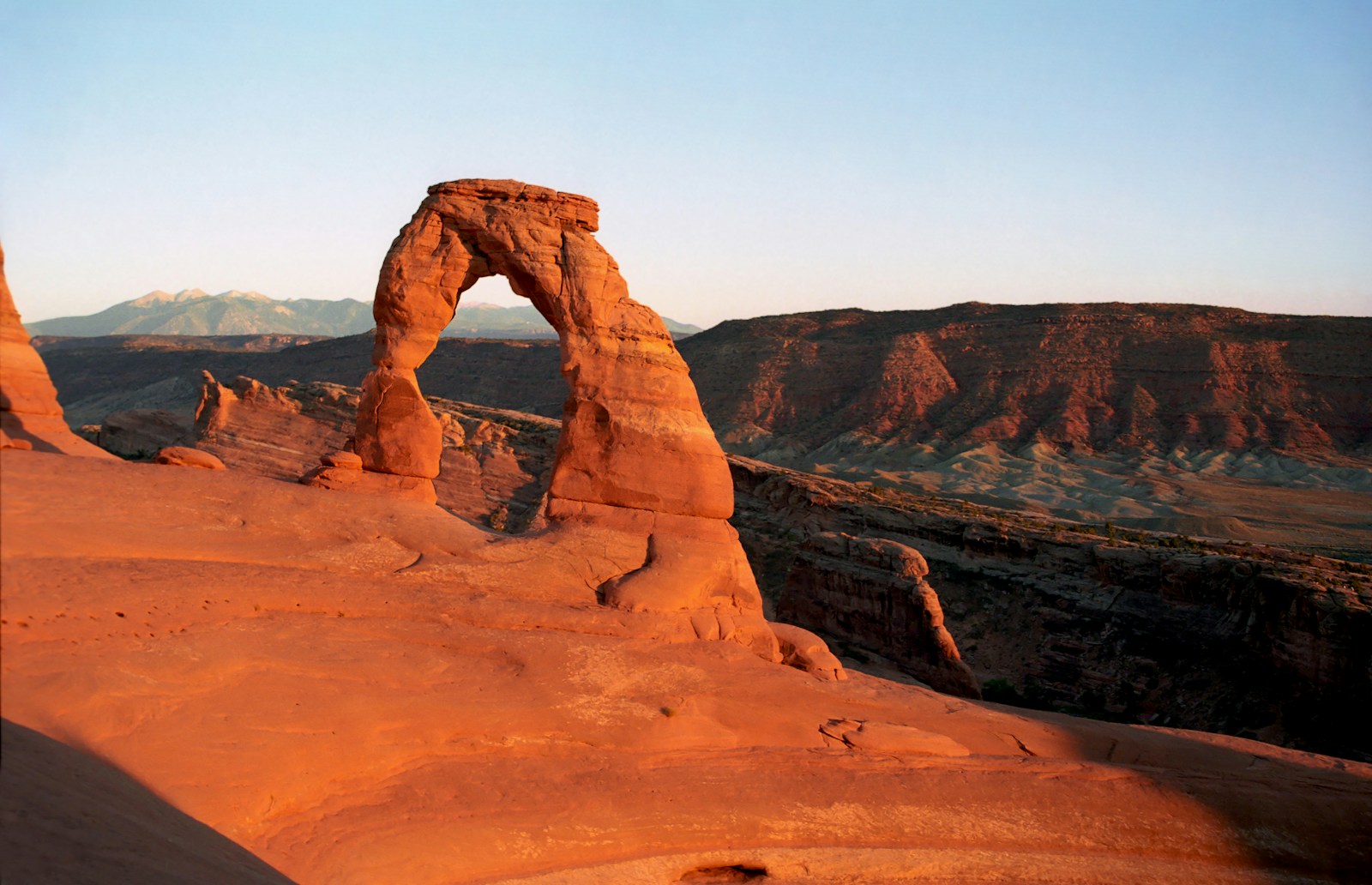Landscape photography captures the raw beauty of nature, transforming scenic vistas into timeless works of art. For photographers seeking the perfect backdrop, America’s national parks offer unparalleled opportunities to capture dramatic landscapes, from towering mountains to serene lakes and everything in between. These protected natural treasures provide photographers with a diverse canvas of geological wonders, unique ecosystems, and spectacular lighting conditions. Whether you’re a professional with high-end equipment or an enthusiast with a smartphone, these parks offer endless possibilities for creating stunning images that evoke emotion and showcase the grandeur of the natural world.
Yosemite National Park: A Photographer’s Paradise
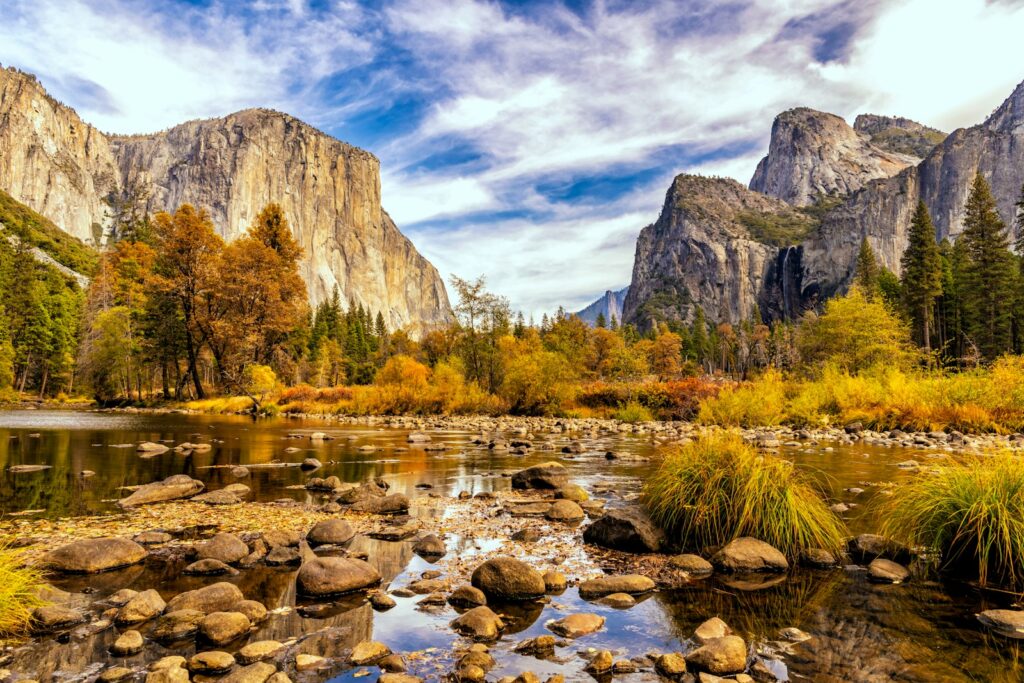
Yosemite National Park in California stands as perhaps the most iconic landscape photography destination in America, eternally linked to the legendary work of Ansel Adams. The park’s dramatic granite cliffs, including the famous El Capitan and Half Dome, create powerful vertical elements that draw the eye skyward and provide perfect subjects for capturing scale and grandeur. Seasonal waterfalls like Yosemite Falls and Bridalveil Fall add dynamic elements to compositions, particularly in spring when snowmelt creates thundering cascades. Yosemite Valley offers photographers the rare combination of accessible viewpoints with extraordinary landscapes, while the less-visited high country delivers alpine meadows and reflective lakes. The changing light throughout the day transforms the valley, with many photographers seeking the alpenglow that paints the granite walls with warm hues at sunrise and sunset.
Grand Teton National Park: Jagged Peaks and Reflective Waters
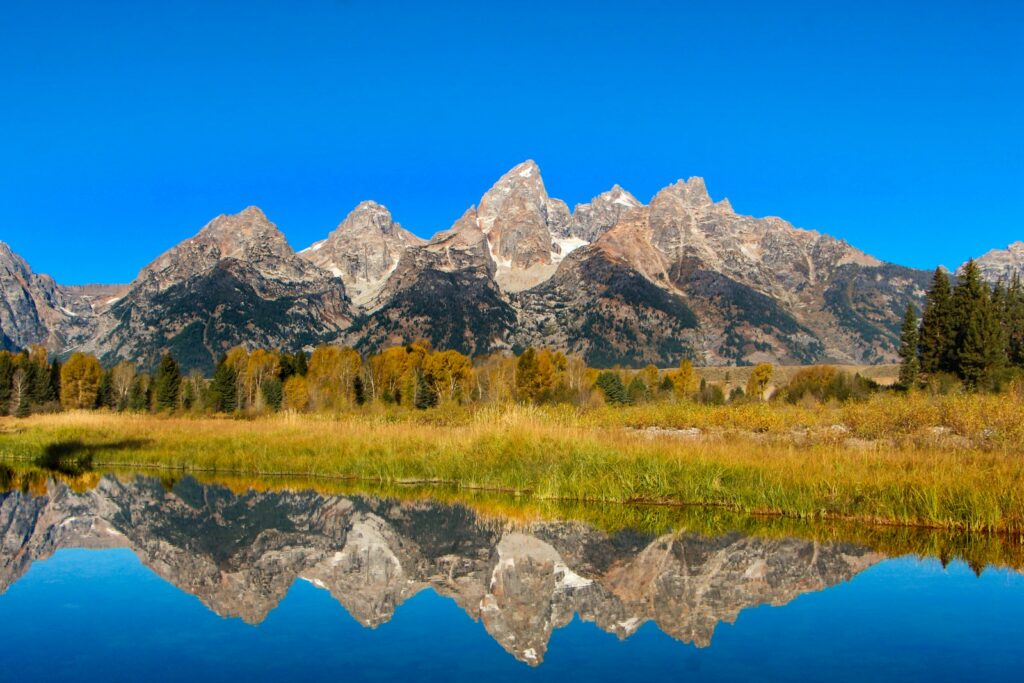
Grand Teton National Park presents photographers with a dramatic mountain range that rises abruptly from the valley floor without foothills, creating one of the most distinctive mountain profiles in North America. The park’s pristine lakes, particularly Jenny Lake and Jackson Lake, offer perfect reflections of the Teton Range, doubling the impact of the jagged peaks in still morning conditions. Wildlife frequently appears in the foreground, adding narrative elements to landscape compositions, with moose, elk, and bison commonly seen grazing in meadows beneath the mountains. The Snake River winding through the valley provides leading lines that photographers can use to guide viewers’ eyes toward the mountains, famously captured in Ansel Adams’ iconic “The Tetons and the Snake River” image. Photographers particularly prize the first light of dawn when the eastern sun illuminates the western-facing mountain range with a vibrant alpenglow while the valley remains in shadow.
Death Valley National Park: Alien Landscapes and Extreme Conditions
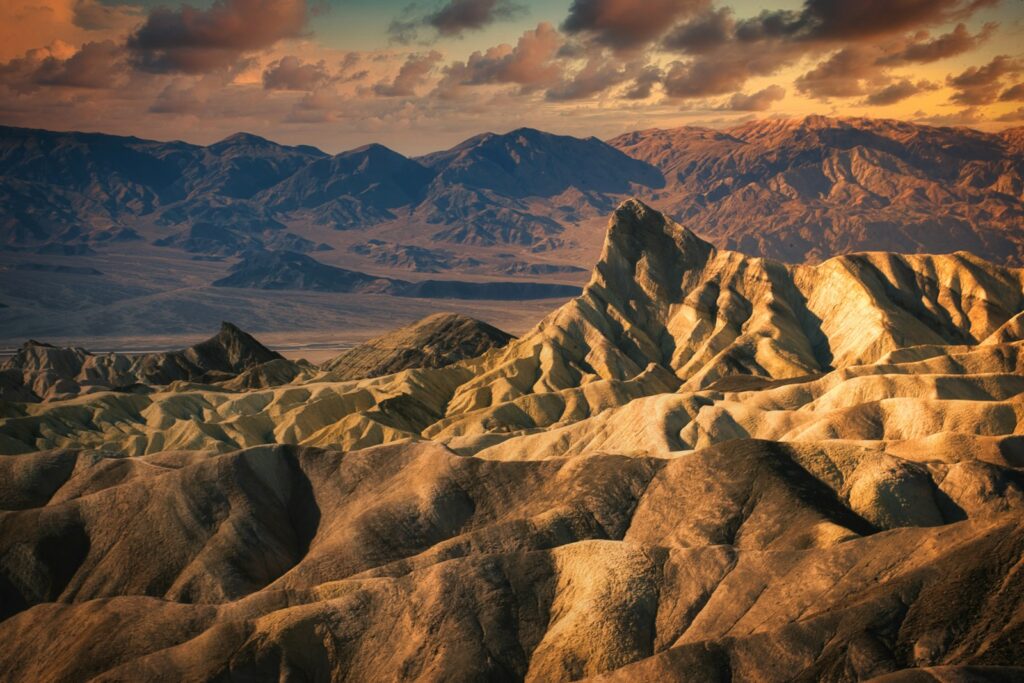
Despite its forbidding name, Death Valley National Park offers photographers some of the most otherworldly landscapes on the continent, with extreme geological features that create striking abstract compositions. The Mesquite Flat Sand Dunes present ever-changing patterns of light and shadow, especially during the golden hours when low-angle light reveals every ripple and curve in the sand with dramatic definition. Badwater Basin, the lowest point in North America at 282 feet below sea level, features polygonal salt flat patterns that stretch toward distant mountains, creating powerful foreground elements for wide-angle compositions. The colorful mineral deposits of Artists Palette present photographers with vibrant natural abstractions, while Zabriskie Point offers panoramic views of deeply eroded badlands that glow with intense colors at sunrise. Winter and early spring prove ideal for photography, when temperatures become tolerable and occasional rain can create rare and dramatic conditions, including temporary lakes that reflect the surrounding mountains.
Grand Canyon National Park: Depth, Scale, and Dramatic Light
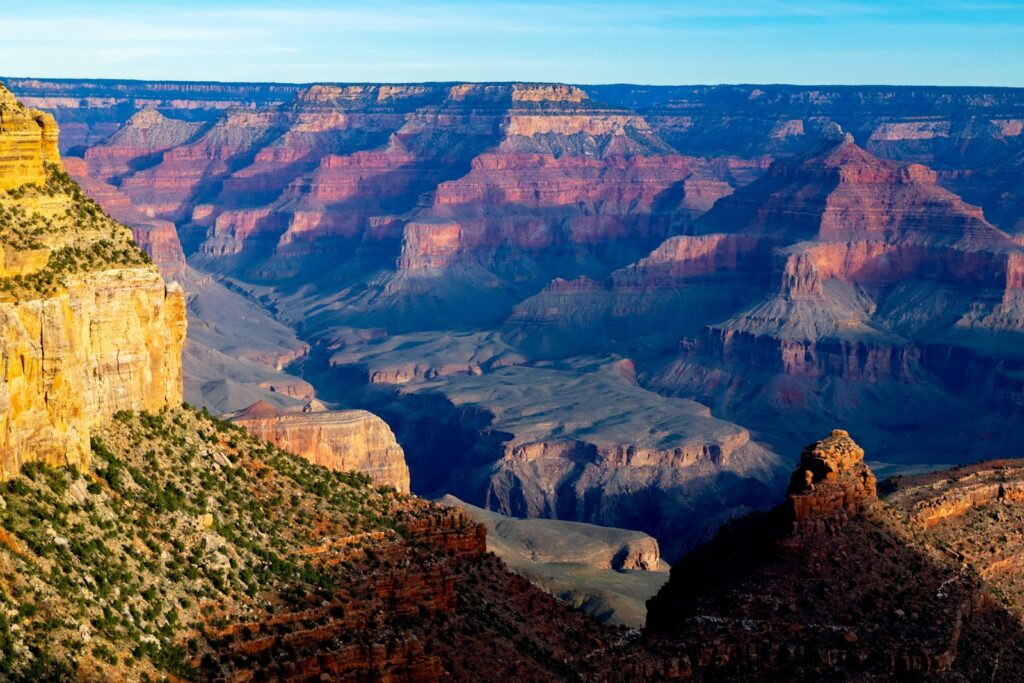
The Grand Canyon presents photographers with the ultimate challenge of capturing the immense scale and depth of a landscape that stretches beyond what the human eye or camera lens can fully comprehend. The interplay of light and shadow continuously transforms the canyon throughout the day, with each hour presenting new colors and textures as sunlight penetrates different layers of the ancient rock formations. Photographers often find success by including foreground elements like gnarled juniper trees or rock formations to provide scale and depth to their compositions, creating a visual journey into the canyon’s vastness. Weather adds another dimension to Grand Canyon photography, with summer monsoon storms creating dramatic cloud formations and lightning strikes, while winter occasionally dusts the reddish-orange layers with snow for rare and striking contrast. The South Rim offers more accessible viewpoints and facilities, while the higher, more remote North Rim provides a different perspective with fewer crowds and lush forests that frame canyon views.
Glacier National Park: Alpine Splendor and Vanishing Ice
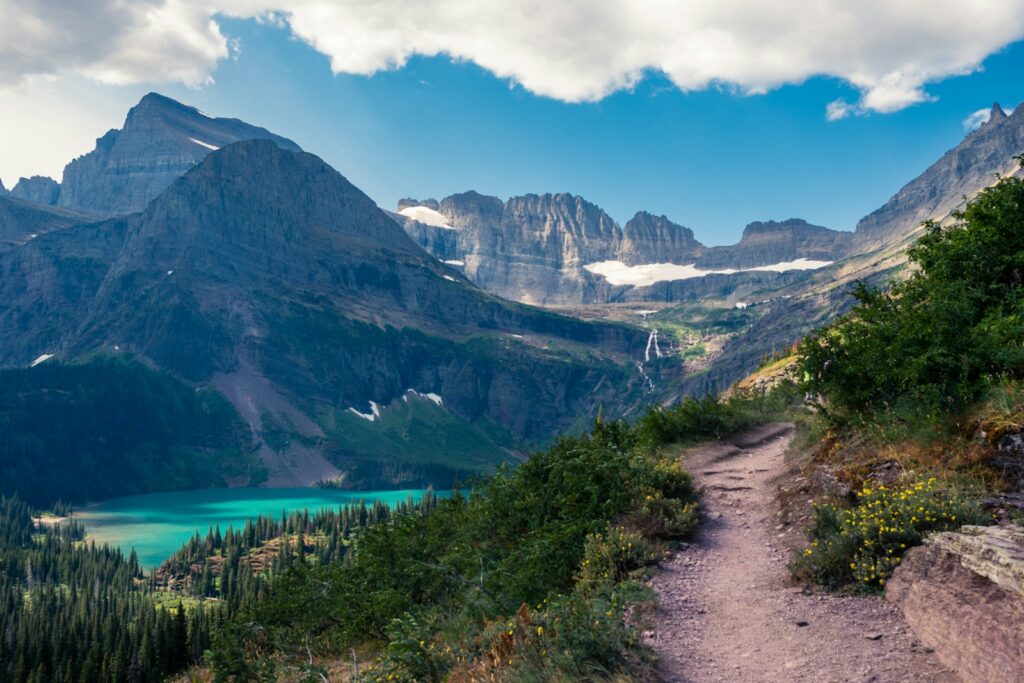
Glacier National Park in Montana combines rugged mountain peaks, crystal-clear lakes, and its namesake glaciers into compositions that epitomize the wild grandeur of the Rocky Mountains. The Going-to-the-Sun Road provides access to some of the most spectacular vistas in the American national park system, with Logan Pass offering sweeping views of hanging valleys and mountain goats frequently posing on rocky outcrops. Many Glacier and Lake McDonald areas present photographers with perfectly still morning reflections that mirror the surrounding peaks in vibrant detail. The park’s receding glaciers add both beauty and poignancy to images, documenting a rapidly changing landscape that scientists predict may lose its glaciers entirely within decades. Wildflower season in July and August transforms alpine meadows into carpets of color, while fall brings golden aspen and larch trees that create stunning contrast against the deep blue mountain lakes and gray limestone peaks.
Zion National Park: Dramatic Canyons and Celestial Light
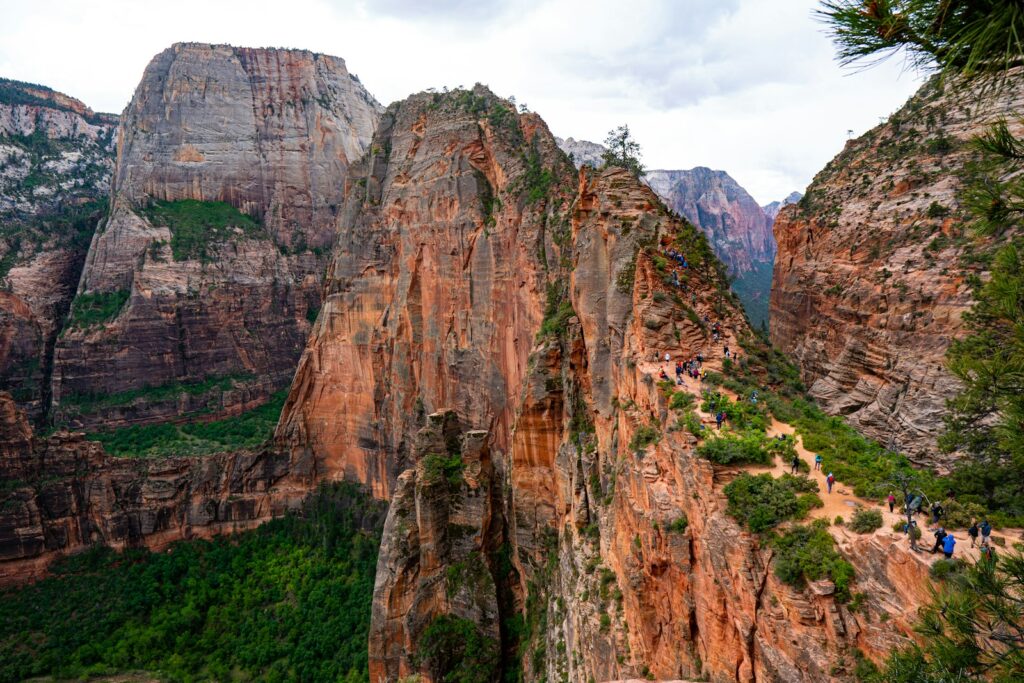
Zion National Park’s narrow sandstone canyons create uniquely intimate landscape photography opportunities where light becomes the subject itself, bouncing between towering walls to create a warm, ethereal glow. The Virgin River cutting through The Narrows offers photographers chances to capture moving water against smooth canyon walls that change color throughout the day, with midday often providing the best reflected light in the deepest sections. Iconic locations like the Watchman viewed from the Canyon Junction Bridge deliver classic sunset compositions where the last light illuminates the peak while the foreground falls into shadow, creating natural contrast. Zion’s night sky photography has gained popularity, with the Milky Way arching over distinctive formations like The Watchman and The Towers of the Virgin, especially during summer months when the galactic core is visible. The park’s varied environments, from riverside cottonwood groves to high desert mesas, provide diverse shooting opportunities within a relatively compact area that can be thoroughly explored over just a few days.
Olympic National Park: Three Distinct Ecosystems
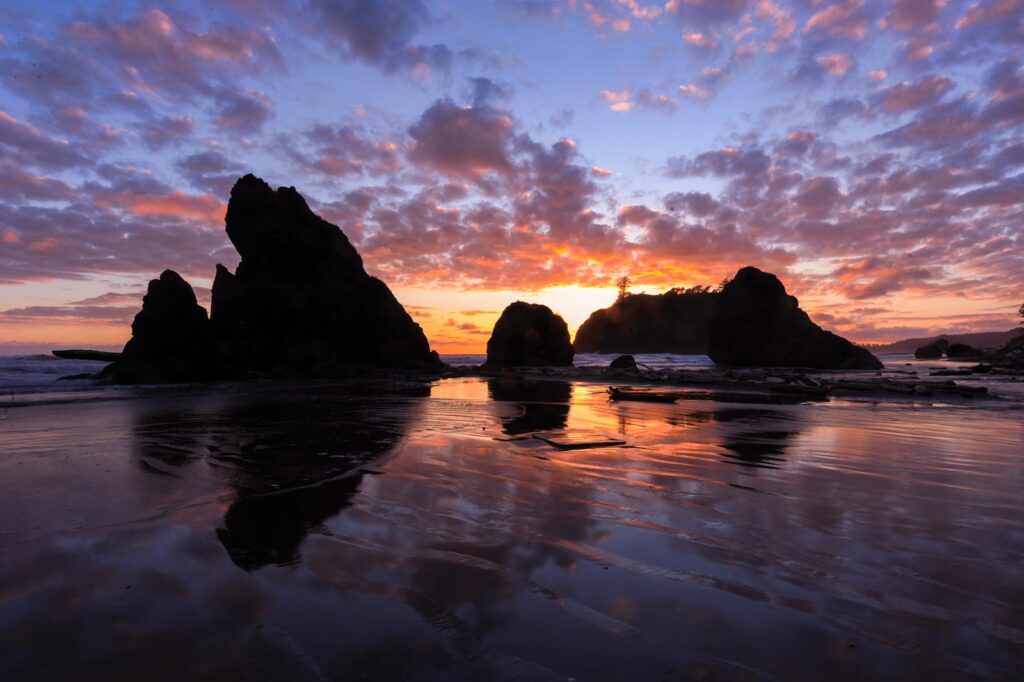
Olympic National Park offers landscape photographers an unmatched diversity of environments within one park, encompassing temperate rainforests, wild coastline, and alpine meadows. The Hoh and Quinault Rainforests present otherworldly scenes of moss-draped maples and towering spruce trees, with fog frequently adding atmosphere and soft diffused light perfect for intimate forest compositions. Along the coast, sea stacks and tide pools create dramatic foreground elements against Pacific sunsets, with Ruby Beach and Rialto Beach being particularly photogenic with their driftwood logs and reflecting wet sand at low tide. The park’s high country around Hurricane Ridge provides sweeping views of the Olympic Mountains, with wildflower meadows adding color in summer and frequent fog creating layered compositions as valleys fill with clouds while peaks remain in sunlight. Photographers benefit from the park’s notorious rainfall in creating lush, vibrant landscapes, though this same precipitation makes weather protection for equipment essential.
Arches National Park: Natural Stone Architecture
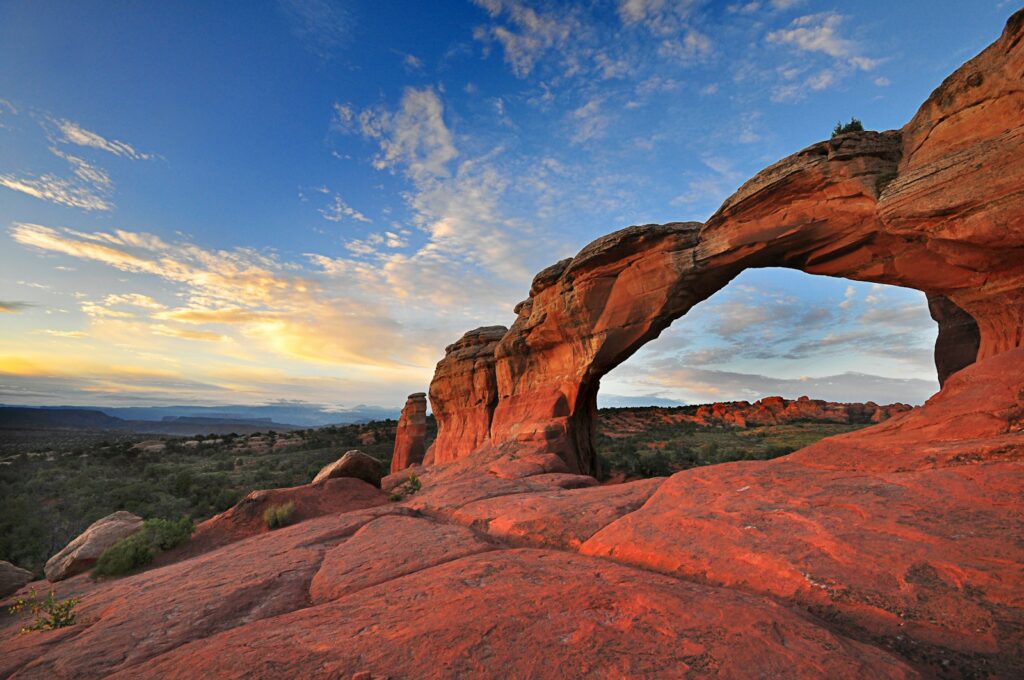
Arches National Park contains the world’s largest concentration of natural stone arches, offering photographers distinctive frame elements that can’t be found elsewhere in such abundance. The park’s red sandstone formations glow with remarkable intensity at sunrise and sunset, with Delicate Arch standing as the most iconic formation, perfectly capturing the warm light of late afternoon. Night photography has become increasingly popular at Arches, with the Milky Way visible through formations like North Window and Turret Arch creating compositions that combine geological and astronomical wonders. Beyond the famous arches, the park’s fins, balanced rocks, and hoodoos provide endless compositional opportunities, with The Windows Section offering multiple photographic subjects in a relatively small area. Photographers visit year-round, though spring and fall offer the most comfortable temperatures, while winter occasionally brings the dramatic contrast of snow against red rock, and summer monsoon season can deliver spectacular storm clouds and rainbows.
Rocky Mountain National Park: Alpine Grandeur and Wildlife
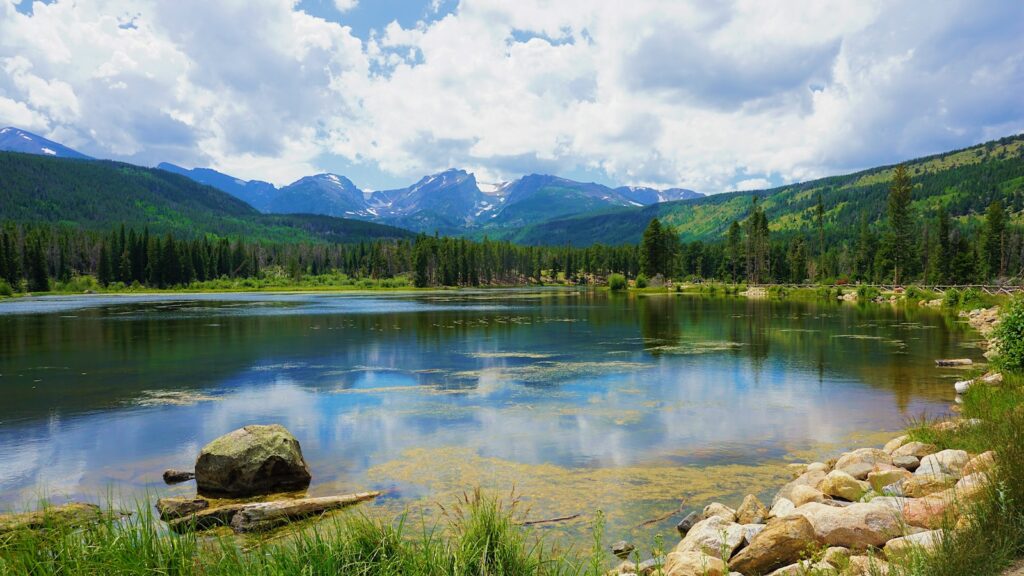
Rocky Mountain National Park encompasses the spectacular Front Range of Colorado’s Rocky Mountains, with Trail Ridge Road providing access to alpine environments typically requiring lengthy hikes elsewhere. The park’s numerous subalpine lakes, including Dream Lake and Bear Lake, offer perfect reflections of surrounding peaks when photographed in early morning before winds disturb the surface. Fall brings the annual elk rut, where photographers can capture massive bull elk bugling against dramatic mountain backdrops, creating wildlife images with strong landscape elements. The park’s eastern side features more dramatic terrain with sheer rock faces, while the western side offers more gently rolling terrain with expansive meadows where moose frequently graze near meandering streams. Longs Peak, the park’s highest mountain at 14,259 feet, creates a distinctive backdrop for many compositions, particularly when viewed from various points along Trail Ridge Road or from the Moraine Park area when alpenglow illuminates its eastern face.
Denali National Park: North America’s Highest Peak
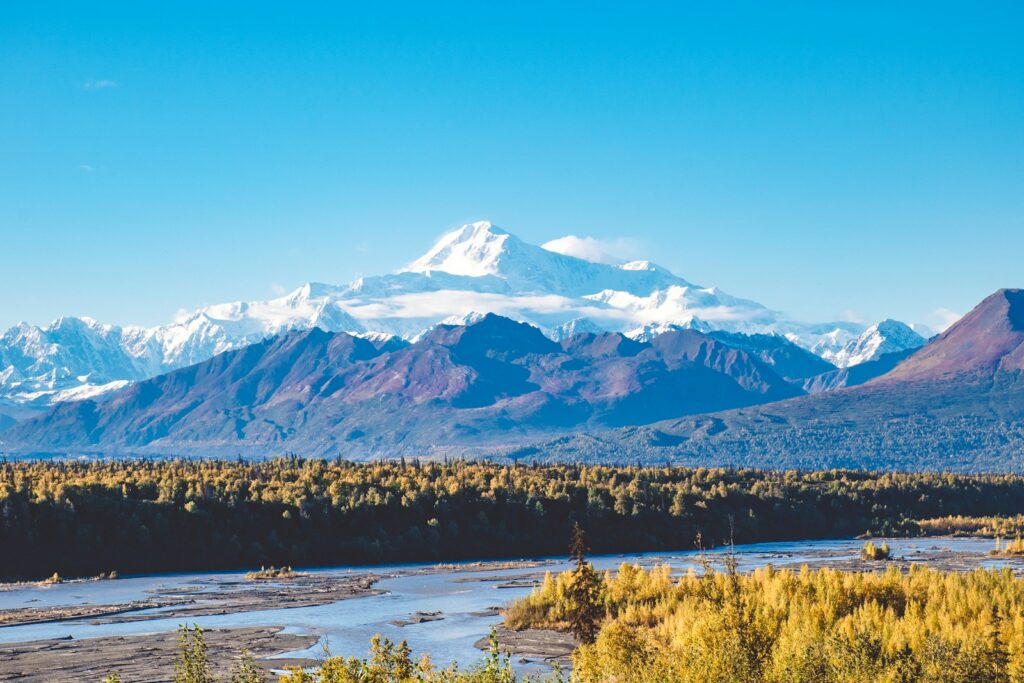
Denali National Park in Alaska offers landscape photographers the chance to capture North America’s tallest mountain, the 20,310-foot Denali, rising dramatically above the surrounding wilderness. The mountain creates its own weather system, remaining cloud-covered approximately two-thirds of the time, making clear views particularly precious and rewarding for patient photographers. Wildlife often appears in natural settings, allowing for environmental portraits of grizzly bears, wolves, caribou, and Dall sheep against sweeping landscapes without the fences or artificial environments of more developed parks. The park’s vast wilderness and limited road access creates a genuine sense of remoteness in images, with fewer signs of human presence than in most other national parks. Photographers visiting during late August and September may capture the brilliant red and gold tundra fall colors contrasting with early snowfall on the upper elevations, while the summer solstice period brings extraordinary extended golden hours with the sun barely dipping below the horizon.
Bryce Canyon National Park: Hoodoo Wonderland
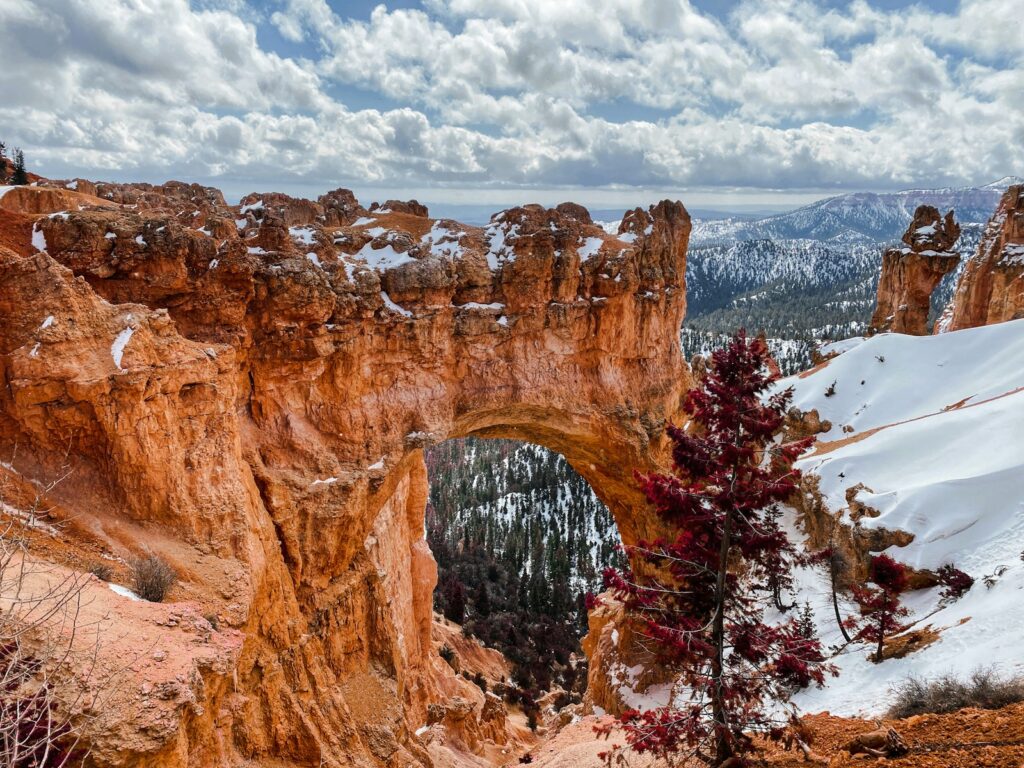
Bryce Canyon National Park showcases the world’s largest collection of hoodoos – irregular columns of rock formed by frost weathering and stream erosion – creating one of the most distinctive landscape photography settings on the planet. The amphitheater’s orange, pink, and white spires catch the first light of dawn dramatically, with Sunrise Point living up to its name by offering spectacular early morning photography opportunities as the rising sun progressively illuminates the hoodoos. Winter transforms the park into a snow-and-spire wonderland with far fewer visitors, allowing photographers to capture pristine snow formations against the orange rock formations without crowds in the frame. The park’s relatively high elevation at over 8,000 feet places photographers closer to dramatic cloud formations, particularly during summer monsoon season when afternoon storms build massive thunderheads. Bryce’s location away from major cities results in extraordinarily dark skies, making it ideal for night photography with distinctive hoodoo silhouettes against star-filled skies or the Milky Way.
Mount Rainier National Park: Volcano in Bloom
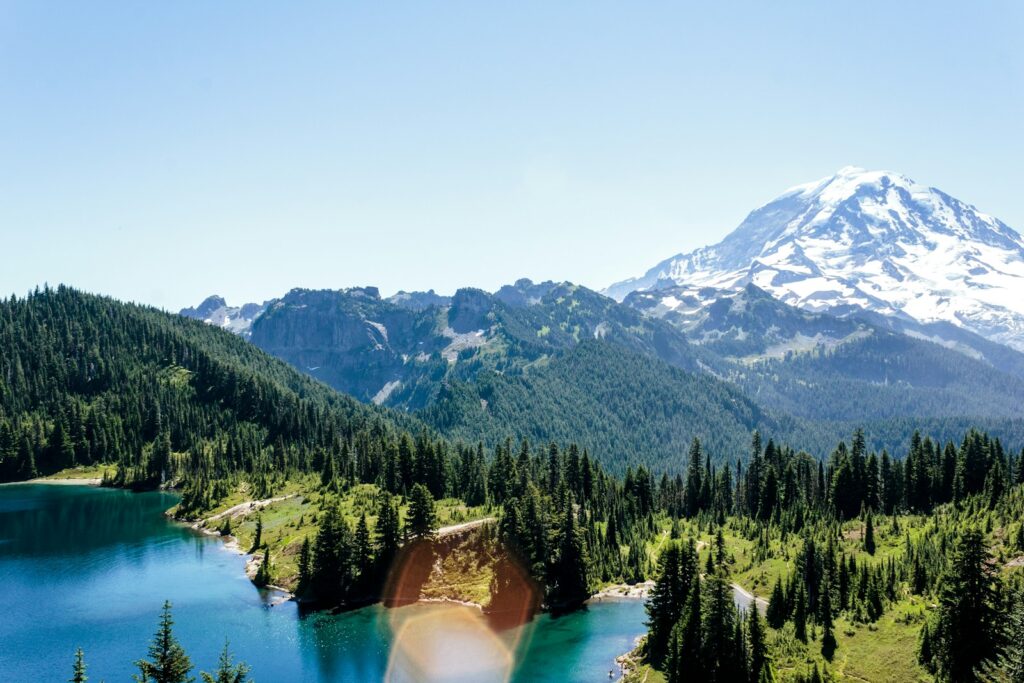
Mount Rainier National Park features an active stratovolcano that dominates the landscape, rising 14,410 feet above sea level and standing as the most topographically prominent mountain in the contiguous United States. The mountain’s massive glaciers – the most extensive single-peak glacier system in the lower 48 states – create dramatic texture and form, particularly evident in telephoto compositions that compress distant ice fields. During summer, subalpine meadows explode with wildflowers, with Paradise and Sunrise areas offering accessible photography locations where colorful blooms create stunning foregrounds to the massive volcano. Reflective tarns and alpine lakes throughout the park mirror the mountain on calm mornings, with Reflection Lake providing one of the most classic compositions. The mountain frequently creates its own weather systems, with cloud formations that can add drama to images, while its massive profile frequently catches alpenglow even when surrounding mountains have fallen into shadow.
Essential Tips for Successful National Park Photography
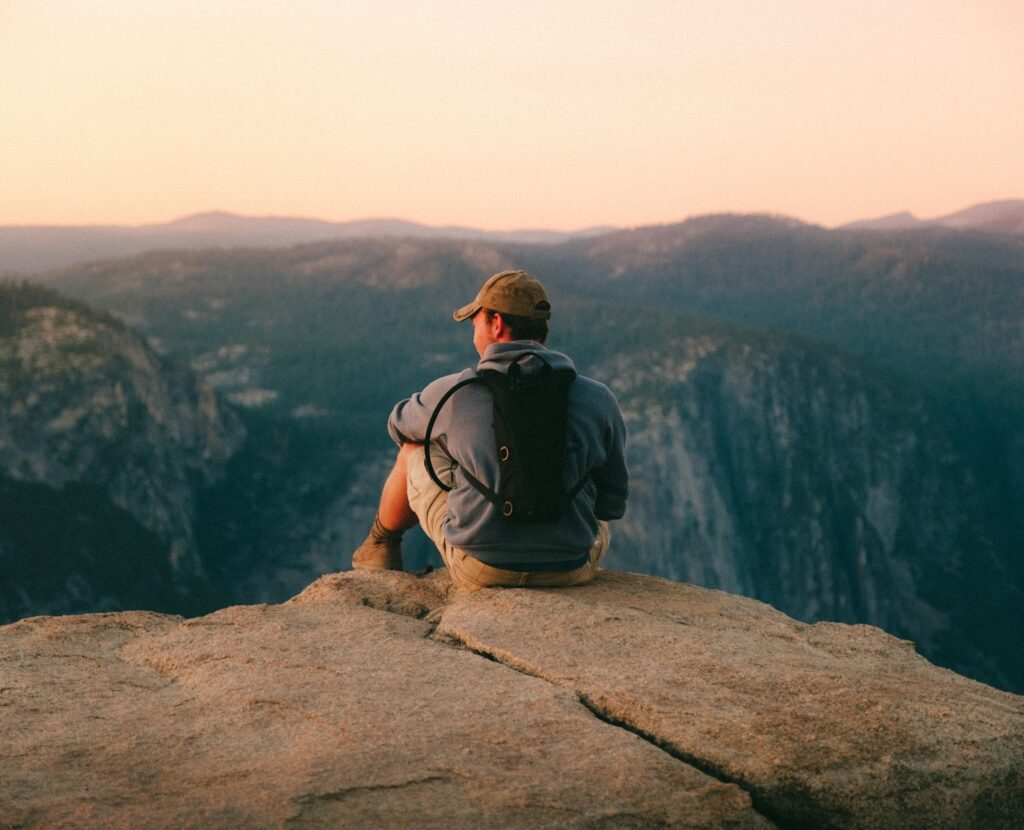
Successful landscape photography in national parks requires preparation beyond just camera gear, with research into seasonal conditions providing crucial information for planning productive trips. Many iconic locations are best photographed at specific times of day, making a scout day valuable for determining exact shooting positions and timing before attempting to capture definitive images. Photographers should always prioritize environmental protection, staying on designated trails and being mindful that tripod legs can damage sensitive vegetation in alpine environments or cryptobiotic soil in desert settings. The rapidly growing popularity of landscape photography has led to overcrowding at certain iconic viewpoints, so exploring beyond well-known locations often yields both more original compositions and more enjoyable experiences. Patience remains perhaps the most important quality for landscape photographers, as exceptional conditions often develop unexpectedly, rewarding those willing to return to locations multiple times or wait out changing weather systems.
## Conclusion
America’s national parks preserve the country’s most spectacular landscapes, providing photographers with subject matter that continues to inspire awe and creativity. From Yosemite’s towering granite to Death Valley’s alien terrain, each park offers distinct photographic opportunities that change with seasons, weather, and light. These protected areas allow photographers to connect with natural wonders that have inspired generations of artists before them. While popular viewpoints can sometimes feel crowded, the mindful photographer who ventures beyond the obvious, respects the environment, and invests time in understanding the unique characteristics of each location will be rewarded with images that capture not just the visual beauty, but the emotional essence of America’s greatest natural treasures.

